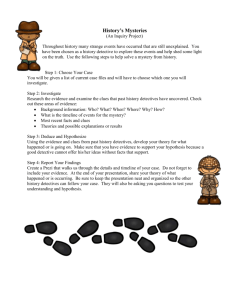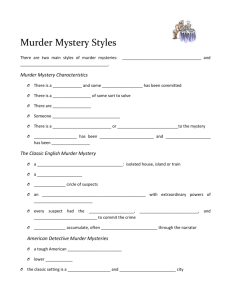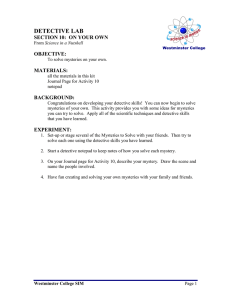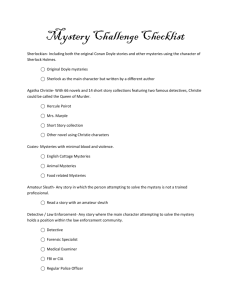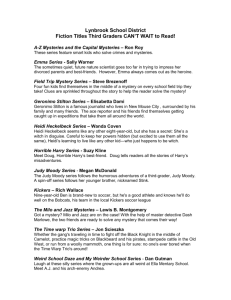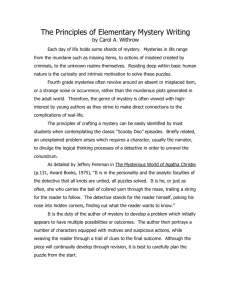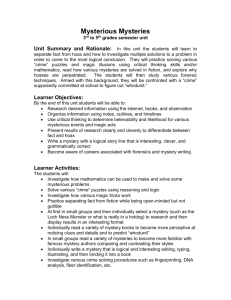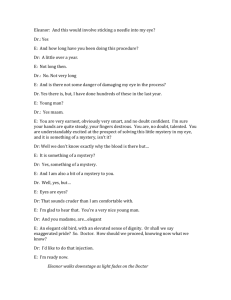Mystery & Gothic Fiction: Characteristics & Analysis
advertisement
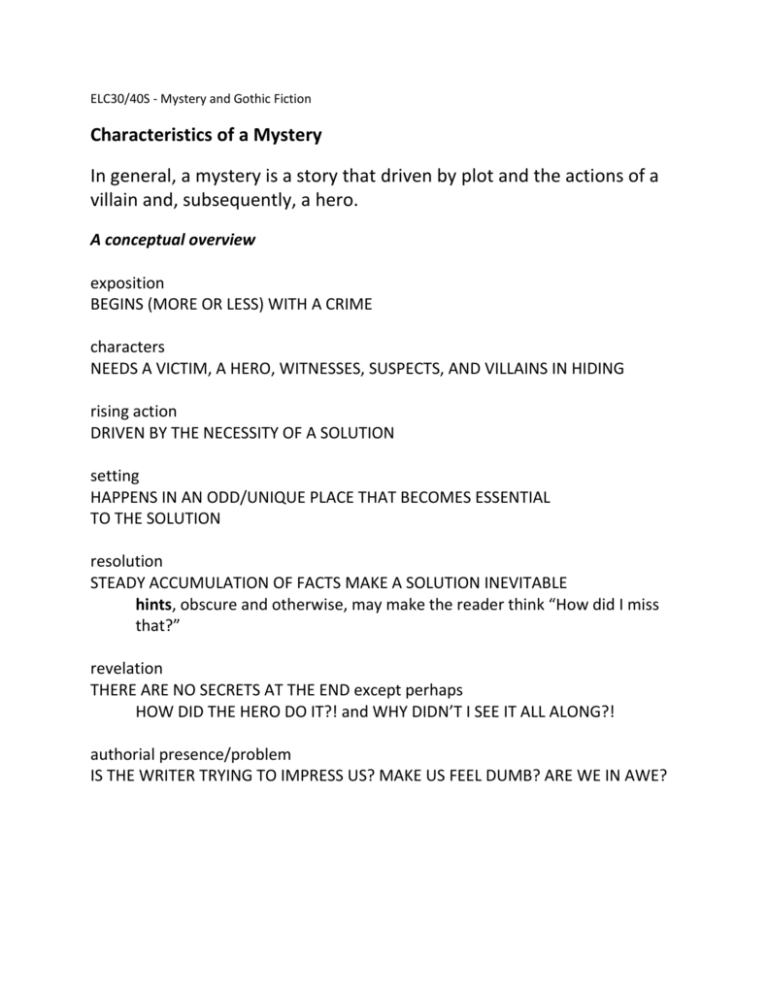
ELC30/40S - Mystery and Gothic Fiction Characteristics of a Mystery In general, a mystery is a story that driven by plot and the actions of a villain and, subsequently, a hero. A conceptual overview exposition BEGINS (MORE OR LESS) WITH A CRIME characters NEEDS A VICTIM, A HERO, WITNESSES, SUSPECTS, AND VILLAINS IN HIDING rising action DRIVEN BY THE NECESSITY OF A SOLUTION setting HAPPENS IN AN ODD/UNIQUE PLACE THAT BECOMES ESSENTIAL TO THE SOLUTION resolution STEADY ACCUMULATION OF FACTS MAKE A SOLUTION INEVITABLE hints, obscure and otherwise, may make the reader think “How did I miss that?” revelation THERE ARE NO SECRETS AT THE END except perhaps HOW DID THE HERO DO IT?! and WHY DIDN’T I SEE IT ALL ALONG?! authorial presence/problem IS THE WRITER TRYING TO IMPRESS US? MAKE US FEEL DUMB? ARE WE IN AWE? A MORE IN DETAILED APPROACH TO THE STORY ITSELF Characters 1) Describe, in brief, the personality of the characters whose actions are considered as part of the resolution of the problem. 2) Describe in some detail the personalities of the one or two of the principal characters who are the most important to the solution of the mystery. 3) Who is the detective hero of the story? What makes him or her an effective observer? How do the suspects and other characters in the story respond to him or her? Setting 1) How does the setting affect the action of the story? 2) What is the context of the story … - historically? - politically? - socially? - psychologically? 3) Explain which of these conditions is most significant in expanding the reader’s understanding of the story. Plot 1) exposition of (revealing) the problem - Does the text state the problem in several opening paragraphs of narrative? - Does the text start with the action and let the problem emerge? 2) rising action - What is the action that grows directly out of the problem? - How do the characters try to resolve the problem? - What are the forces that work against each other as the characters seek to solve the problem? - As the action progresses, how does the action build to a final showdown between opposite sides? 3) climax - How and when is the mystery solved? - When did the detective know who was guilty? - When was that person confronted? - Is there more than one climax in the story? If so, explain it. 4) resolution - Describe the states of the primary characters after the mystery is solved. - What happens after the problem is solved? What results from the resolution? - Are the characters forever locked in place (stereotyped), or are they realistic and developed? - What are the options the principal characters have, and why do they make the choices they finally make? Types of mysteries Consider the types of mysteries defined below and, considering your answers to the above, determine what type of mystery you’ve just read, and support your answer with two or three examples from the story. Animal mysteries feature an animal that helps solve crimes. Murder and other violence is generally presented offstage. Capers follow a crime, usually a theft, from concept through execution. Cozies feature an amateur small-town detective. Murder and other violence is generally presented offstage. Hardboiled mysteries often place murder and violence center stage. Legal mysteries feature a lawyer or other legal professional solving crimes, usually with extensive courtroom scenes. Locked room/puzzle mysteries are intellectual puzzles in which detectives solve seemingly impossible crimes. Noir carries an underlying assumption that good may not always triumph. Police procedurals feature law enforcement officers solving Crimes using standard procedures. Private-eye stories feature private detectives hired to solve crimes. Spy fiction features government operatives, often working undercover. Suspense often involves some kind of "ticking clock," with unfolding events leading to a climactic conclusion.
